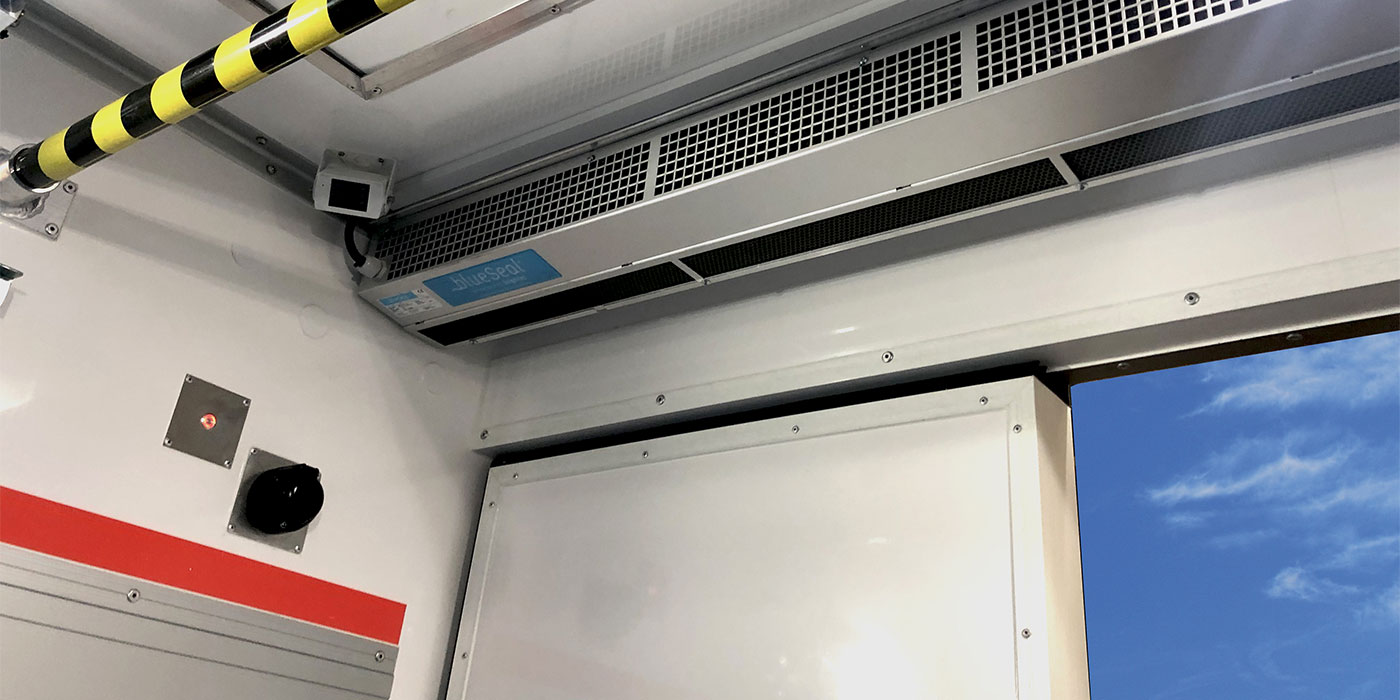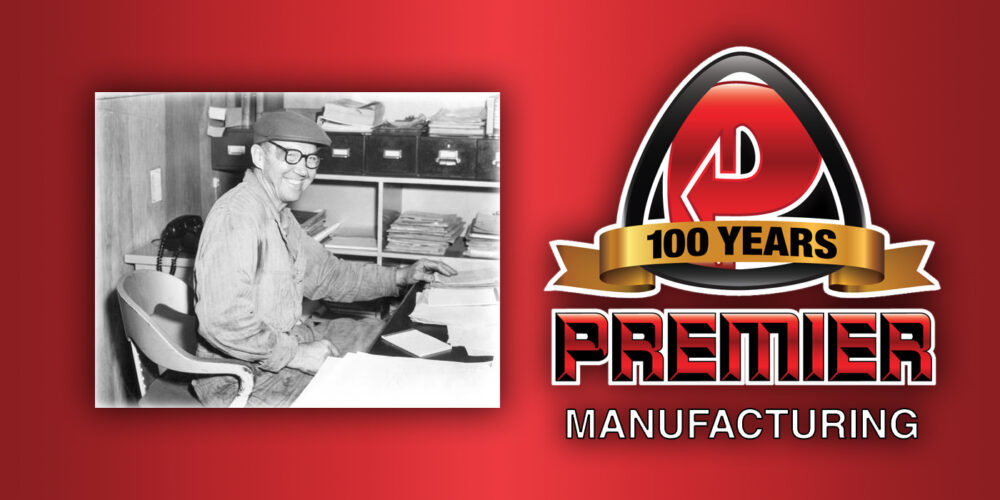
The well-known benefits of tire pressure monitoring and automatic tire inflation systems have led to their steady adoption by fleets. In general, the solutions are chosen for their ability to improve fuel efficiency, enhance safety, extend tire life and reduce the cost of downtime for tire-related events.
“Most fleet managers understand the issues surrounding underinflation, such as increased deflection causing excess heat which weakens the tire’s structure and leads to faster wear and reduced life,” says Matt Wilson, controls business unit director with Hendrickson Trailer Commercial Vehicle Systems. “However, overinflated tires are harder than properly inflated tires, making them more susceptible to tread surface cutting, impact breaks, punctures and shock damage. And finally, if tires have mismatched tire pressures, permanent irregular wear patterns can develop within a few weeks.
Underinflation and heat are synonymous, notes Jim Sharkey, vice president of global sales and marketing at Pressure Systems International (P.S.I.). “Automatic tire inflation systems [ATIS] on trailers will ensure that tires will not run underinflated, resulting in elevated temperatures that cause excessive wear and ultimately failure of the casing. Various third-party tests have also proven that these systems will result in improved tread life.”
Howard Fromm, senior product manager for trailer at Meritor, says that tire inflation and monitoring systems are simple, effective solutions. “By operating tires at their designed pressure,” he adds, “the contact area between the tire and the road remains optimum and promotes minimal wear and preserves casings.”
Temperature impact
“Ambient air temperature fluctuates daily and seasonally,” says Judith Monte, vice president of marketing for Aperia Technologies. “Every 10 degree increase or decrease in ambient temperature causes tire pressure to rise or fall by 2 to 3 PSI. As a result, fleets experiencing regular daily temperature swings, or mid-season cold spells, are likely to see tire-damaging underinflation that simply cannot be effectively managed manually.”
Hendrickson’s Matt Wilson points out another way in which increases in ambient air temperature can cause tire issues. “Overinflation can drastically decrease tire life, especially when a trailer returns to warmer temperatures and the air in the tires expands,” he says. “That results in less than desirable tread wear and leaves tires more susceptible to road hazards.”
“A visual inspection of the tire’s sidewall and crown area should also be a regular practice for fleets running inflation systems to help prevent roadside events.”
Coy V. Jones III, senior operational marketing manager of B2B regional and small fleet for Michelin North America, Inc.
“Tire temperature plays a huge role in removal miles,” relates Al Cohn, director of new market development & engineering support at PSI. “When a truck tire is running cool, tire mileage is maximized, but as tire temperature increases and rubber temperatures reach more than 200 degrees, the rubber begins to break down and that leads to early tire removal.”
Tire wear is also very much dependent on the tire’s footprint on the ground when running, notes Coy V. Jones III, senior operational marketing manager of B2B regional and small fleet for Michelin North America, Inc. “Both underinflation and overinflation can affect the footprint shape, causing irregular wear and premature removal,” he says. “Overinflated tires increase the likelihood of crown cuts, impact breaks, punctures and shock damage resulting from the decrease of sidewall flexing and an increase in firmness of the tread surface.
“The benefits of tire monitoring and inflation systems regarding optimal tread wear and casing life and fuel savings are compelling,” Jones continues. “But even using these systems, an inspection should be completed periodically to ensure proper inflation and operation of the inflation system components. A visual inspection of the tire’s sidewall and crown area should also be a regular practice for fleets running inflation systems to help prevent roadside events.”
With advancements in today’s radial casings, Jones continues, it is virtually impossible to determine whether a tire is properly inflated without using a calibrated pressure gauge. In addition, periodically calibrating gauges is important because usage can cause a pressure gauge to lose accuracy.
“Combining GPS technology with tire pressure systems can also be used for automatically generating work orders at shops when a vehicle experiencing a tire event enters a geo-fenced area.”
Jim Sharkey, vice president of global sales and marketing at Pressure Systems International (P.S.I.)
Michelle Reinhart, Continental’s head of digital solutions for commercial vehicle tires in the Americas region, points out preventative actions fleets can take to help tires stay cool and last longer during operation. “First, always monitor air pressure, and second, adhere to tire load ratings,” she says. “Tires operating under heavy loads generate more heat, so even if tires are rated for the load they can become overheated, especially when ambient temperatures are high.
“Third, if possible, avoid high speeds that can increase the amount of heat generated due to friction,” Reinhart adds. “Lastly, a significant amount of heat is generated by frequent, hard braking, so moderating the amount of braking can help fleets extend the life of their tires.”
Enhancing value
Tire pressure monitoring and inflation system manufacturers, meanwhile, are working on new design and technology features to further enhance the value of their solutions. “Sensors can provide valuable tire pressure and temperature data that can be used to develop algorithms that can drive tire analytics,” says Jim Sharkey at P.S.I. “The data can be used for various purposes such as tire life predictions, tire model and brand evaluations and tracking of casing utilization.
“Combining GPS technology with tire pressure systems can also be used for automatically generating work orders at shops when a vehicle experiencing a tire event enters a geo-fenced area,” Sharkey adds. “Expect to see these system integrations develop into greater functionality very soon.”
Because fleets are asking for early warning detection systems to avoid costly repairs and prolong tire life, relates Howard Fromm, Meritor is evaluating intelligent prognostics that can be communicated through telematics. “As the adoption of telematics on tractors becomes more prominent and the cost of those technologies is reduced, we are assessing solutions that can be integrated into existing systems,” he says.
Continental’s Michelle Reinhart notes that by integrating tire pressure and temperature monitoring systems with telematics providers, the company can deliver accurate casing temperature data remotely. “Fleets using those systems have the ability to see tire temperature data in their telematics web portals and can take preventive actions when tires are running hot,” she explains.
“In addition, we have solutions that can monitor vehicles in a yard through a mobile portal, and that can deliver accurate casing temperature data to drivers via an in-cab display so they can see the impact of their driving style on tire temperature in real-time,” Reinhart adds.
A key component
Tire pressure monitoring and inflation system manufacturers all agree that maintaining tires at the manufacturers’ recommended target inflation pressures for a particular axle load is a key component of realizing fuel economy benefits, improving safety and reducing tire related issues and downtime.
A study conducted by the ATA’s Technology & Maintenance Council (TMC) in conjunction with FleetNet America suggests that the best-maintained tires would travel more than two times further without experiencing unplanned downtime, says Judith Monte at Aperia.
“Manual pressure maintenance is difficult and has proven to be highly inaccurate, even for fleets with the very best maintenance practices,” Monte adds. “That’s why so many fleets invest in automatic tire pressure monitoring and inflation technology. It’s like having a tire mechanic at every wheel end whose only job is to ensure optimal inflation.”












